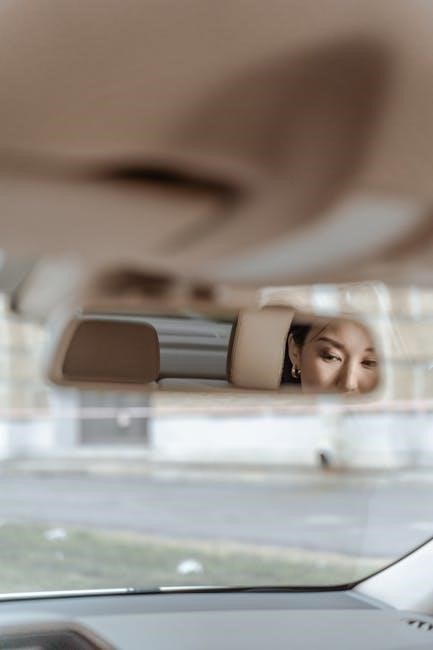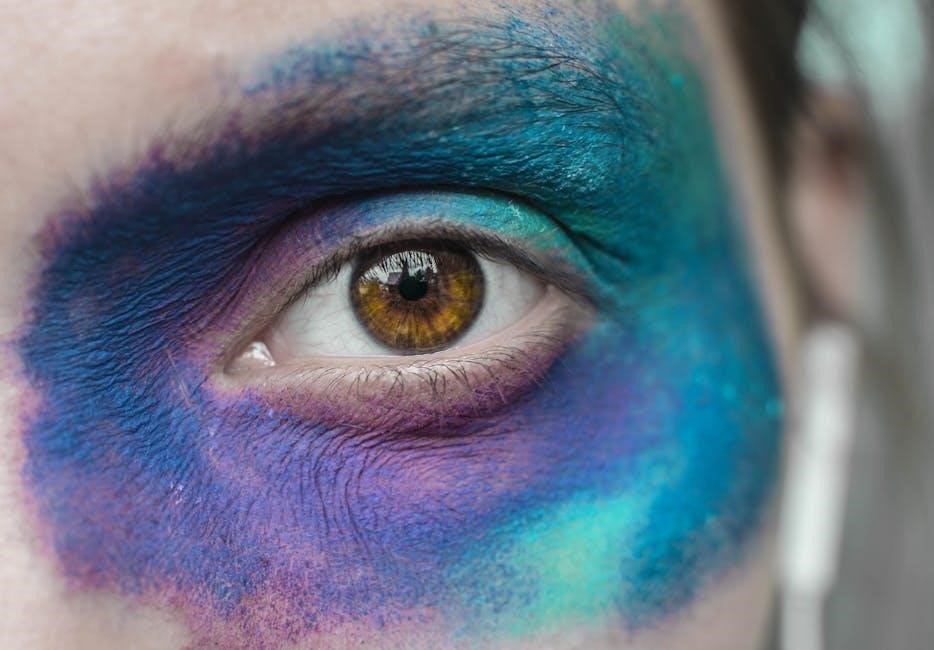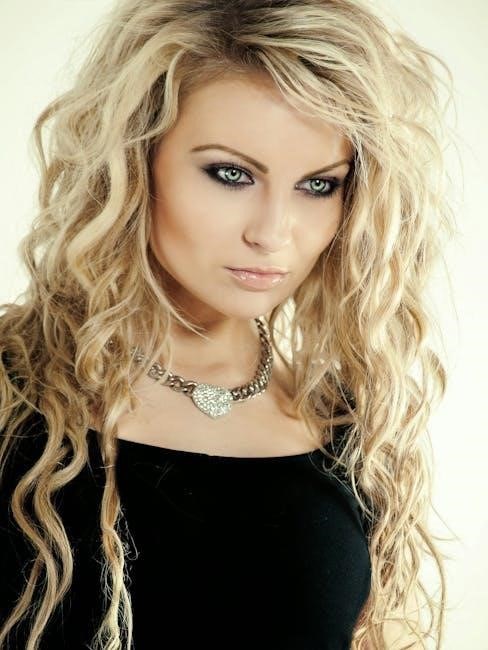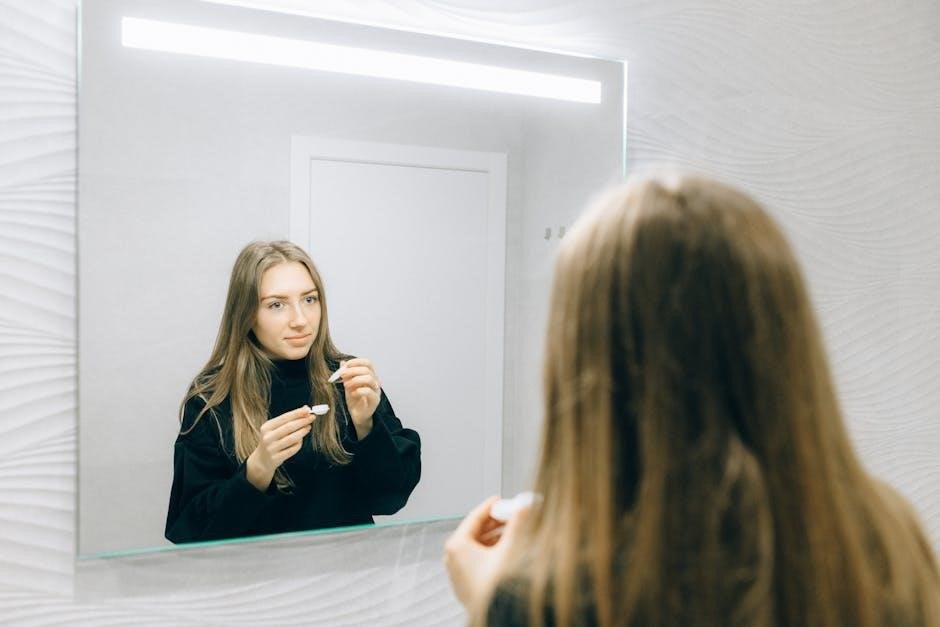Diffusion models are powerful generative models that gradually add noise to data and learn to reverse this process‚ enabling high-quality image synthesis and manipulation․
What Are Diffusion Models?
Diffusion models are a class of generative models that operate by gradually adding noise to data and learning to reverse this process․ They consist of a forward process‚ which progressively corrupts the data‚ and a reverse process‚ which reconstructs the original data from the corrupted version․ These models have gained prominence in imaging and vision tasks due to their ability to generate high-quality‚ photorealistic images and perform complex manipulations․ Their flexibility and effectiveness make them a powerful tool in modern machine learning applications․
Basic Concepts of Diffusion Models
Diffusion models operate through a forward process that gradually adds noise to data and a learned reverse process that reconstructs the original data from this noise․ The forward process involves stepping through a series of noise schedules‚ while the reverse process learns to denoise the data step-by-step․ These models are particularly effective in imaging tasks‚ as they can generate high-quality images by iteratively refining noise into meaningful patterns․ Their ability to model complex distributions makes them versatile tools for both generation and manipulation of visual data․
Core Concepts and Mathematics
Diffusion models rely on a forward process that adds noise and a reverse process that learns to denoise‚ governed by noise schedules and iterative refinement steps․
Diffusion Process
The diffusion process is a foundational component of diffusion models‚ involving the gradual addition of Gaussian noise to data over multiple timesteps․ This forward process transforms the input into a random noise distribution‚ mathematically defined by a variance schedule․ Each step in the process is conditioned on the previous one‚ creating a Markov chain of noise corruption․ The model learns to reverse this process‚ effectively denoising the data to generate high-quality outputs․ This iterative refinement is central to the model’s ability to produce realistic images and perform complex vision tasks․
Reverse Process
The reverse process in diffusion models is the generative phase where the model learns to denoise data step-by-step․ Starting from random noise‚ the model iteratively refines the input by predicting the noise at each timestep․ This process is guided by a neural network trained to estimate the noise‚ allowing the model to reconstruct the original data distribution․ The reverse process relies on a predefined noise schedule‚ which determines the variance at each step․ Recent advancements‚ like prompt-free diffusion‚ simplify this process‚ enabling generation without explicit text prompts‚ making it more versatile for imaging tasks․

Applications in Imaging
Diffusion models are revolutionizing imaging through photorealistic generation‚ editing‚ and manipulation‚ enabling innovative techniques like text-guided synthesis and prompt-free creation‚ while handling multi-image inputs effectively․
Photorealistic Image Generation
GLIDE and similar models leverage diffusion processes to generate highly realistic images from text prompts‚ achieving state-of-the-art results by progressively refining noise into detailed visuals through iterative denoising steps․
Image Editing and Manipulation
Diffusion models excel in image editing tasks‚ enabling precise manipulations such as object removal‚ style transfer‚ and text-guided edits․ By leveraging the iterative denoising process‚ models like GLIDE allow users to refine images while maintaining photorealism․ This approach is particularly effective for text-guided editing‚ where prompts can direct specific changes while preserving contextual details․ The flexibility of diffusion models makes them invaluable for complex editing tasks‚ offering superior control and quality compared to traditional methods․

Applications in Vision-Language Models
Vision-language models integrate visual and textual data‚ enabling tasks like image captioning and text-guided image generation․ They leverage diffusion models for multimodal understanding and generation․
Vision-Language Models (VLMs) are advanced AI systems designed to process and understand both visual and textual data․ They enable tasks like image captioning‚ visual question answering‚ and text-guided image generation․ By integrating diffusion models‚ VLMs achieve state-of-the-art results in multimodal generation and understanding‚ bridging the gap between vision and language․
Multimodal Fusion
Multimodal fusion in diffusion models combines visual and textual information to enhance generation and understanding․ This approach leverages the strengths of both modalities‚ enabling models to capture complex interactions between images and text․ By effectively fusing these elements‚ diffusion models achieve more coherent and context-aware outputs‚ improving tasks like text-to-image synthesis and image editing․

Challenges and Limitations
Diffusion models face challenges like training instability‚ high computational costs‚ and slow inference times‚ limiting their scalability and practical applications despite their impressive capabilities;
Training and Stability Challenges
Training diffusion models is complex due to instability in the learning process‚ often requiring precise tuning of hyperparameters․ The models can suffer from mode collapse and inconsistent sampling quality․ Additionally‚ the iterative nature of the reverse diffusion process demands careful balancing of noise levels and training steps․ These challenges make stabilization tricky‚ especially in large-scale applications‚ but advancements in loss functions and training techniques are gradually addressing these issues to improve model reliability․
Computational Costs and Efficiency
Diffusion models require significant computational resources due to their iterative training and sampling processes․ The forward and reverse diffusion steps demand extensive GPU usage‚ making training large models expensive and time-consuming․ Additionally‚ generating high-resolution images involves numerous denoising steps‚ further increasing computational costs․ While recent optimizations‚ such as faster sampling methods and efficient architectures‚ aim to reduce these costs‚ the models remain computationally intensive compared to other generative approaches like GANs‚ posing challenges for scalability and accessibility․

Recent Advances and Trends
Recent advancements include prompt-free diffusion models‚ eliminating the need for text prompts‚ and multi-image input handling‚ enabling more versatile and dynamic generative capabilities in imaging tasks․
Prompt-Free Diffusion
Prompt-free diffusion models eliminate the need for text prompts‚ enabling image generation directly from noise․ This approach reduces dependency on textual inputs‚ enhancing flexibility and reducing biases from text data․ By learning to generate images without prompts‚ these models simplify workflows and expand creative possibilities․ Recent work by Xingqian Xu and others demonstrates how prompt-free diffusion can achieve high-quality results‚ making it a promising direction for versatile imaging applications and reducing the complexity of text-based generation processes․
Multi-Image Input Handling
Multi-image input handling enables diffusion models to process multiple images simultaneously‚ enhancing their versatility for complex tasks․ This capability is crucial for vision-language applications‚ such as script generation‚ where models must interpret and combine visual inputs effectively․ Recent advancements‚ as highlighted by Qi et al․ in 2024‚ demonstrate how multi-image handling improves model performance in real-world scenarios‚ making diffusion models more adaptable for diverse imaging and vision tasks․
Further Reading and Resources
Explore foundational models and tools like MATLAB Image Processing Toolbox for image processing basics․ Refer to curated lists of vision models and research papers for deeper insights․
Tools and Frameworks
Popular tools for diffusion models include MATLAB Image Processing Toolbox for foundational image processing․ Explore curated lists of vision models and frameworks like GLIDE for text-guided diffusion․ Utilize libraries such as TensorFlow and PyTorch for implementing custom models․ Hugging Face’s diffusers library provides pre-trained models and pipelines for efficient deployment․ These resources offer practical starting points for experimenting with diffusion models in imaging and vision tasks‚ enabling rapid prototyping and deployment․
Research Papers and Surveys
Key papers like “GLIDE” by Alex Nichol and “Prompt-Free Diffusion” by Xingqian Xu demonstrate advancements in diffusion models․ Surveys by PP Liang on Vision-Language Models and Z Xu on multimodal fusion provide comprehensive overviews․ These resources offer insights into foundational concepts and recent trends‚ guiding practitioners and researchers․ Explore these works in top conferences like NeurIPS and arXiv for deeper understanding and implementation details‚ ensuring a well-rounded knowledge base․
